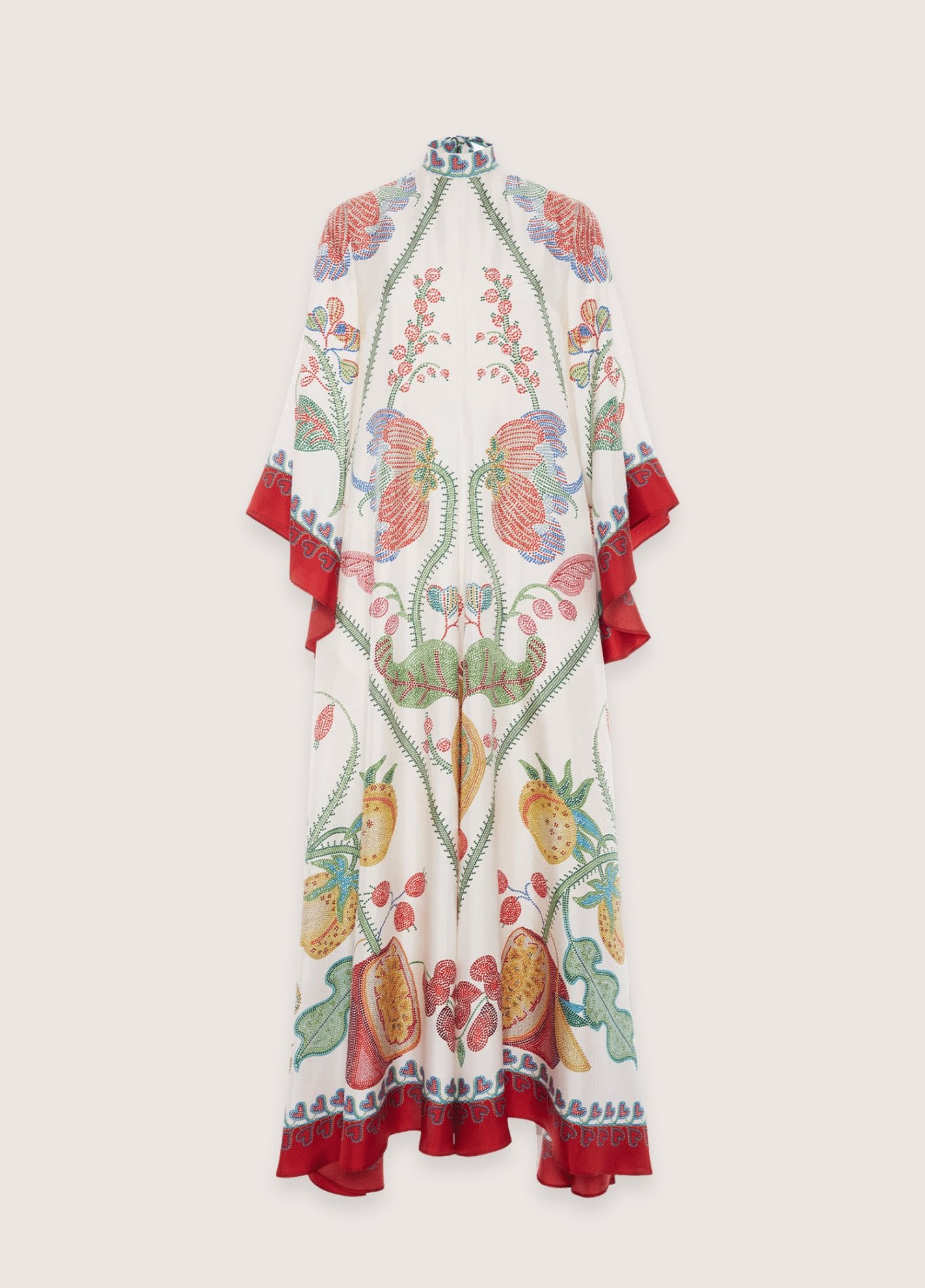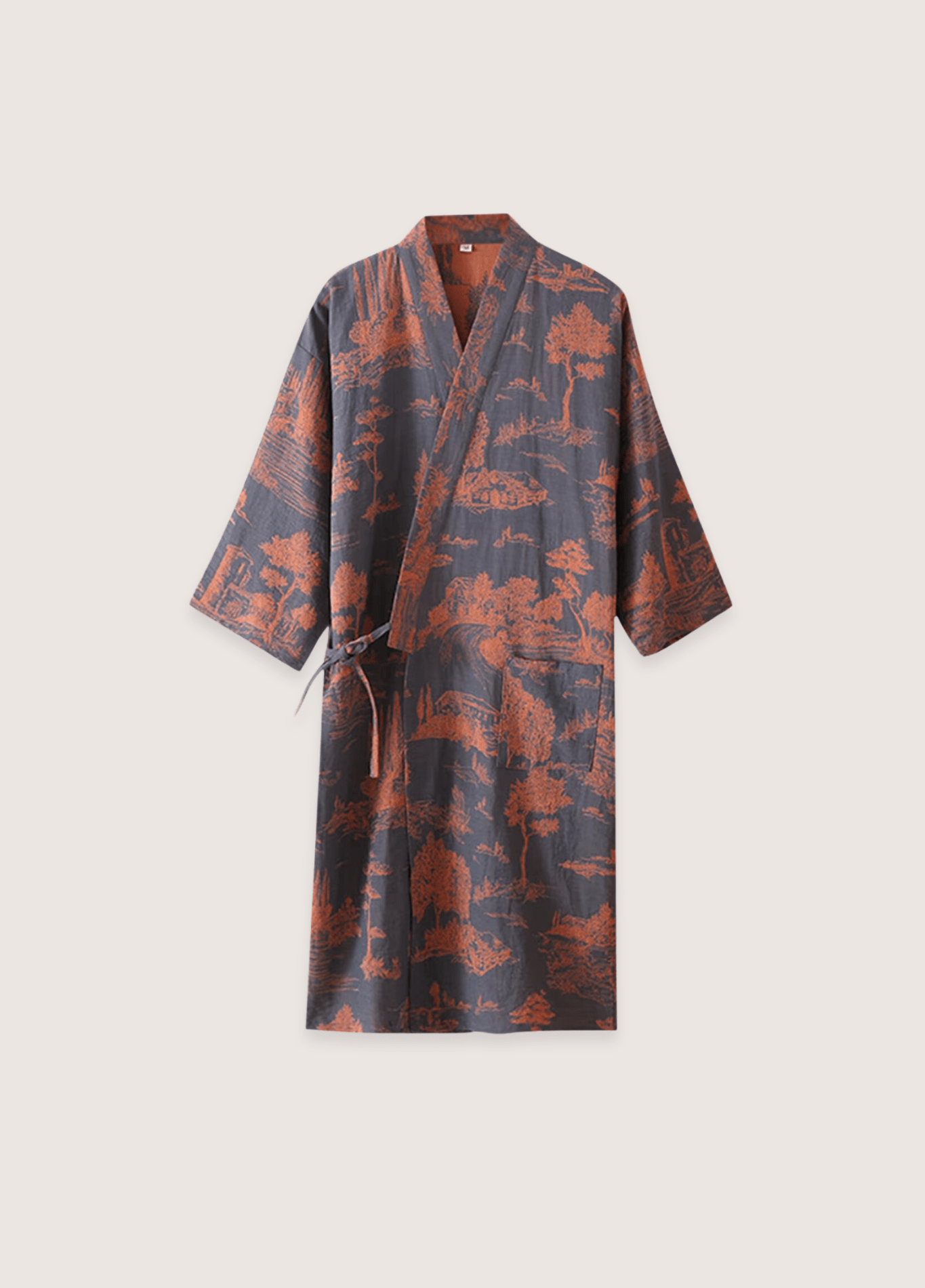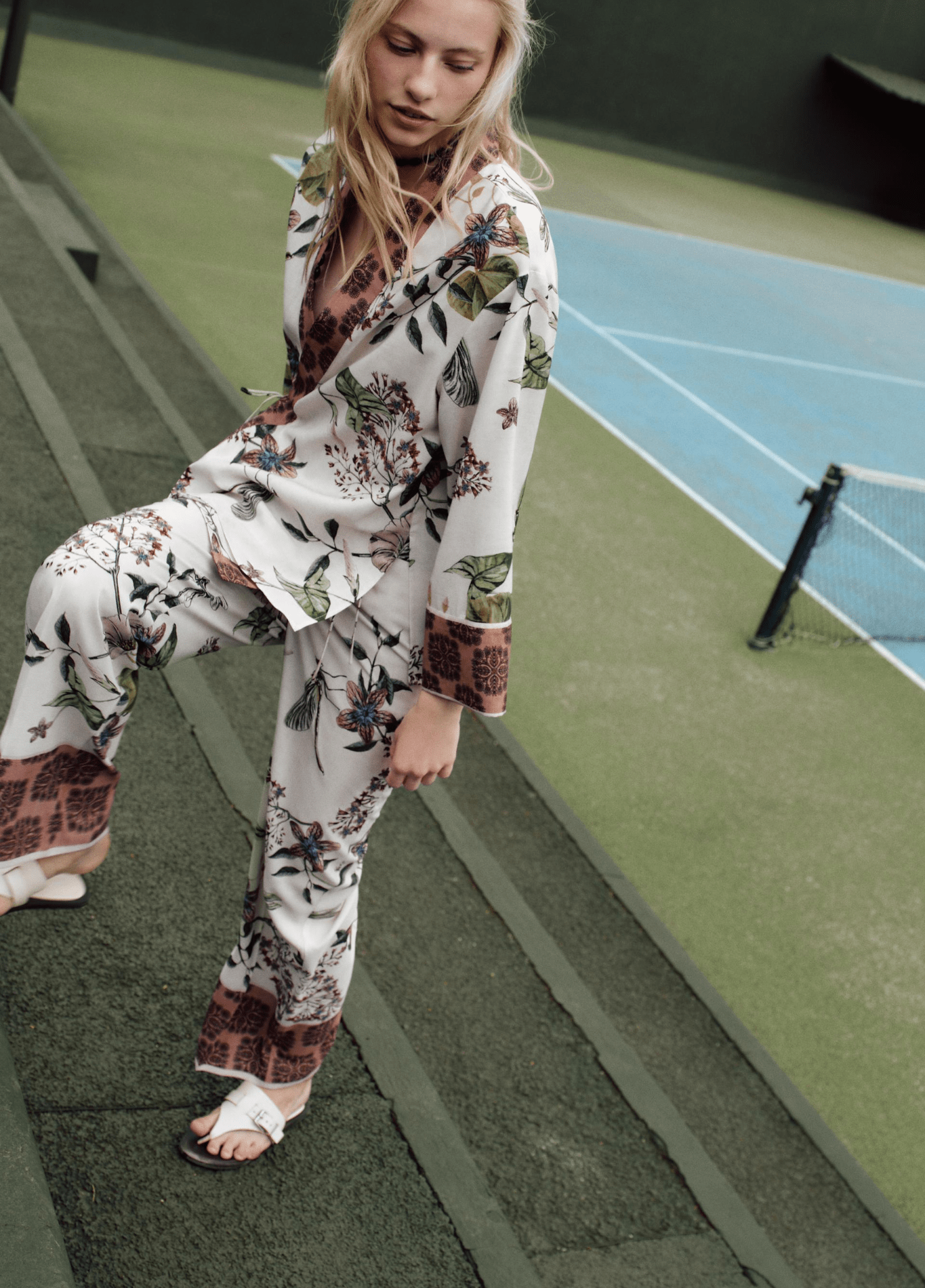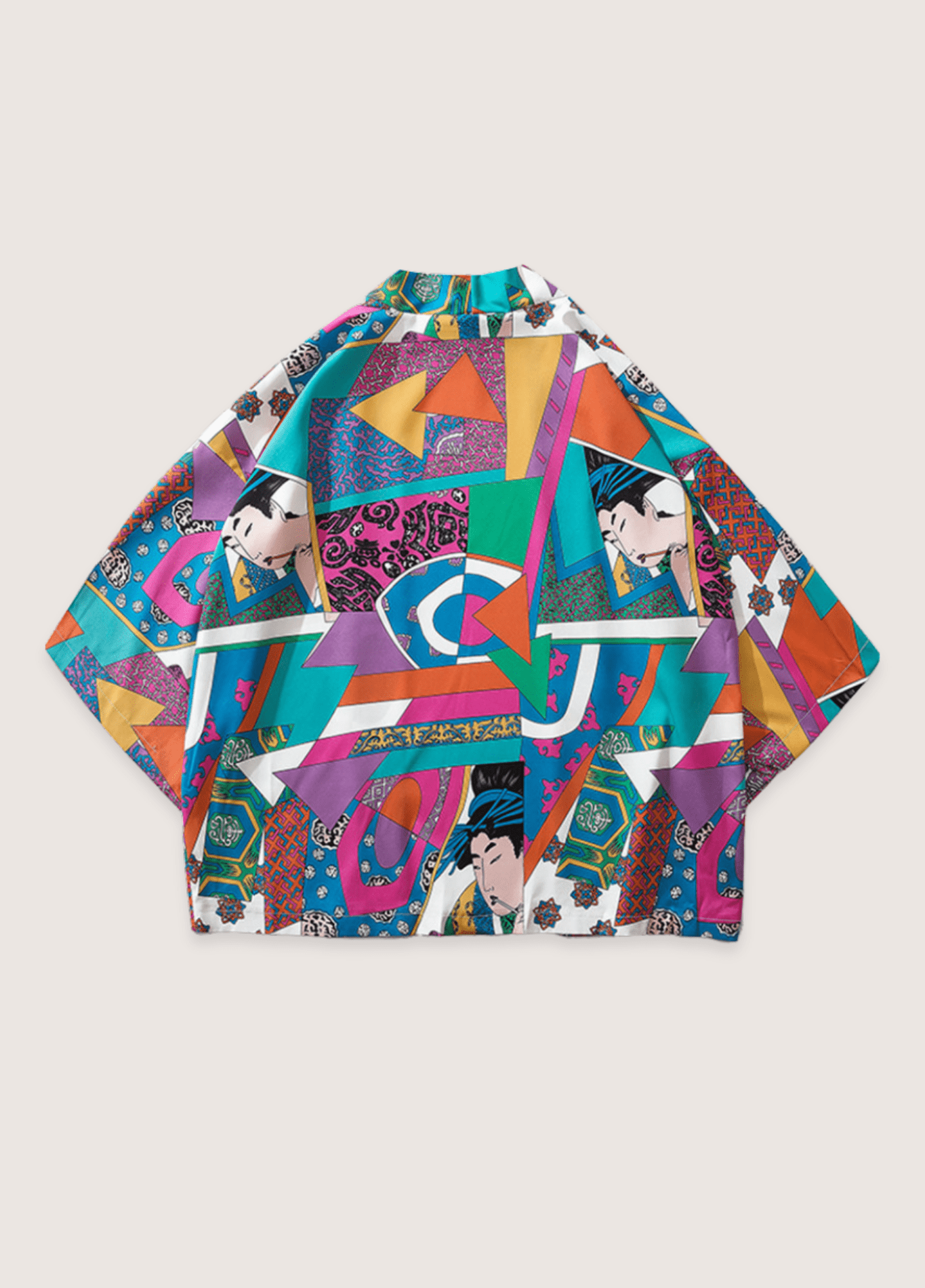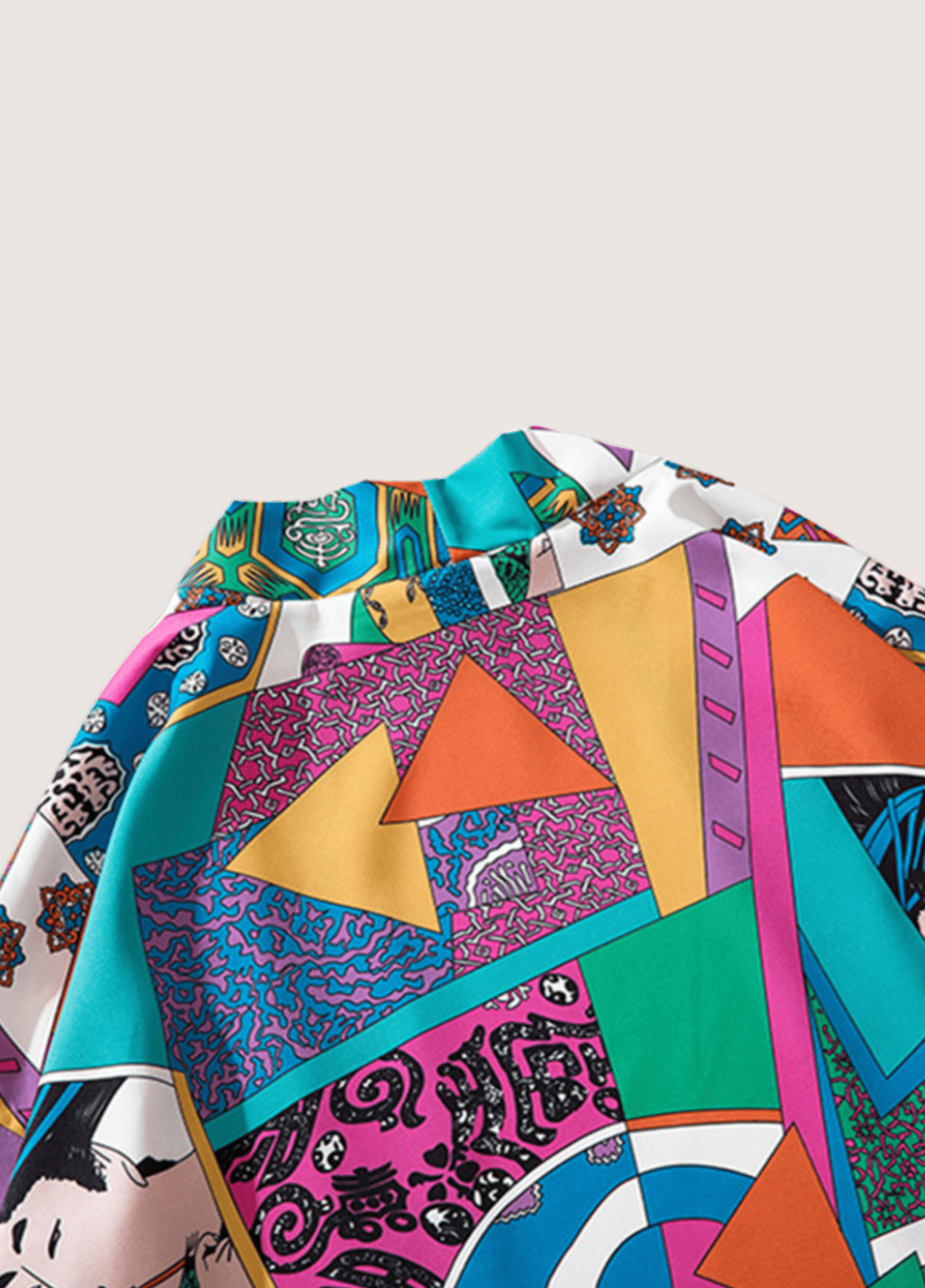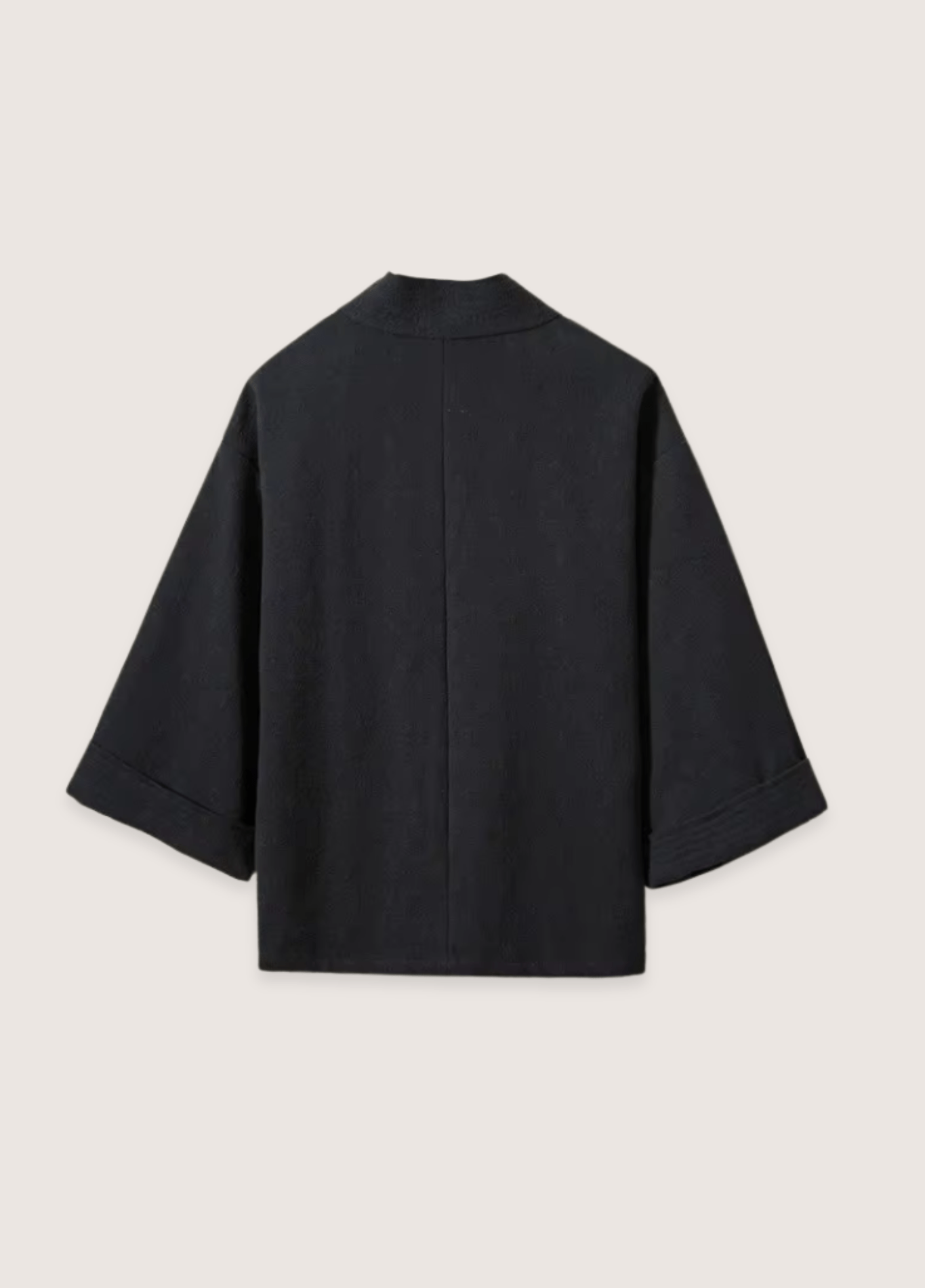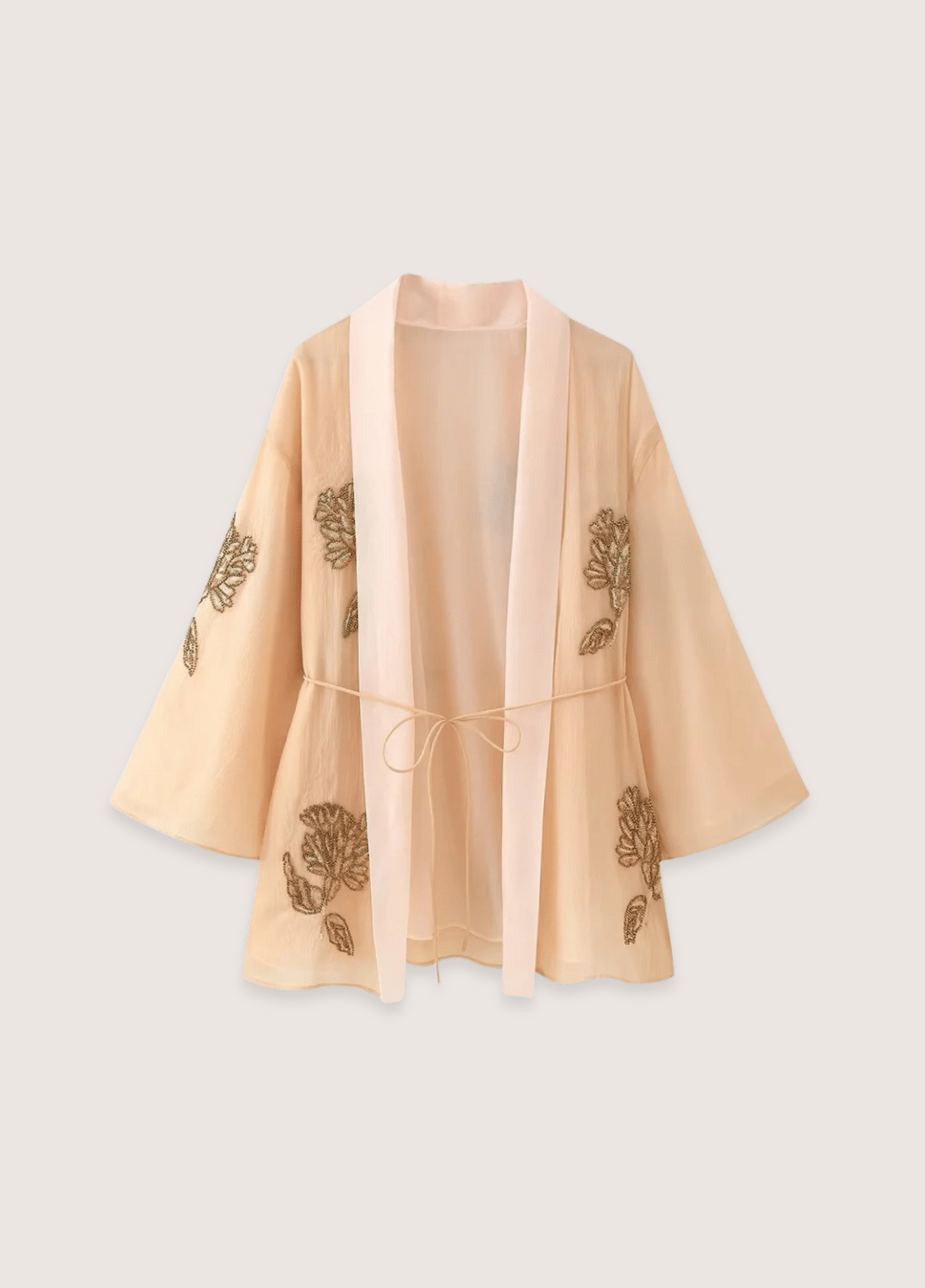The elegance of a men's kimono is revealed through its carefully chosen accessories. In Japanese tradition, each element that makes up the outfit tells a story and contributes to creating perfect harmony. These accessories, the fruit of centuries-old craftsmanship, transform a simple kimono into an outfit that embodies the very essence of Japanese refinement.
Summary:
Belts: The Art of Support
Traditional Shoes: The Foundation of Elegance
The Art of Tabi: Perfection in Detail
Outdoor Clothing: Protection and Presence
Additional Accessories: Finishing Touches
Seasonal Harmony
Coordination: A Subtle Art
The Interview: Preserving Tradition
Belts: The Art of Support
The belt system of the male kimono represents much more than a simple functional element. The kaku-obi (角帯), this iconic rigid belt, symbolizes the uprightness and dignity of the wearer. Traditionally woven in silk or cotton, it comes in sober tones - black, gray or dark blue - which reflect the understated elegance so characteristic of Japanese men's fashion.
For more casual occasions, the heko-obi (兵児帯) offers a looser, more relaxed alternative. This belt, particularly popular during festival season, allows freedom of movement while maintaining the distinguished look of the kimono. Its less formal tying than the kaku-obi fits perfectly with the festive nature of summer yukata.
The datejime (伊達締め), although less visible, plays a crucial role. This support belt, worn under the main obi, ensures the stability of the whole. Its presence, discreet but essential, perfectly illustrates the Japanese concept of functional beauty.
 Japanese belt
Japanese belt
Traditional Shoes: The Foundation of Elegance
In Japanese tradition, the choice of footwear is of particular importance. The zori (草履), these elegant sandals, represent the height of formal refinement. Made of fine leather or noble materials, they accompany the most ceremonial outfits. Their wearing requires a measured gait, recalling the importance of body awareness in Japanese culture.
Geta (下駄), with their distinctive silhouette and wooden soles, embody a more casual approach. The distinctive sound of their footsteps on the cobblestones evokes the poetry of traditional Japanese neighborhoods. Particularly suited to wearing yukata, they excel at summer festivals or casual strolls.
 Zori, Japanese sandals
Zori, Japanese sandals
The Art of Tabi: Perfection in Detail
Tabi (足袋), these traditional socks with such a distinctive look, deserve special attention. Their unique design, separating the big toe from the other fingers, is the result of a centuries-old evolution adapted to the wearing of traditional sandals. The immaculate white of the tabi symbolizes purity and cleanliness, fundamental values of Japanese aesthetics.
Outdoor Clothing: Protection and Presence
The haori (羽織) holds a special place in the Japanese male wardrobe. This short jacket, worn over the kimono, adds a layer of sophistication while protecting the kimono. Haori adorned with kamon (family crests) tell the story and status of their wearer, creating a tangible connection to the past.
The hakama (袴), these wide pants with cleverly studied pleats, embody masculine dignity in Japanese tradition. Its wearing requires an upright posture and a confident gait, recalling the heritage of the samurai who made it their preferred outfit.
Additional Accessories: Finishing Touches
The kinchaku (巾着), this traditional pouch, allows you to carry personal belongings with elegance. Its design reflects the attention to detail specific to Japanese craftsmanship, each seam being made with meticulous precision.
The folding fan, or sensu (扇子), goes beyond its utilitarian function to become a true style accessory. Its graceful handling is an integral part of traditional etiquette, particularly during formal ceremonies.
Seasonal Harmony
The art of kimono accessories adapts to the seasons with particular sensitivity. In summer, the uchiwa brings a touch of freshness, while the tenugui elegantly absorbs the summer humidity. Winter sees the appearance of more substantial haori-himo and traditional scarves that harmoniously complement the silhouette.
Coordination: A Subtle Art
The combination of accessories is a subtle art that requires thought and sensitivity. For a formal occasion, the coordination must respect a sober and elegant harmony. The black or dark gray kaku-obi naturally matches black leather zori and immaculate white tabi. The haori, chosen with care, completes the ensemble with distinction.
The Interview: Preserving Tradition
Preserving these precious accessories requires special attention. Each piece deserves specific care that will prolong its beauty and functionality. Belts should be stored carefully, away from direct light. Traditional shoes require regular maintenance, while tabi require daily attention to maintain their characteristic whiteness.
 Two fighters in Japanese kimono
Two fighters in Japanese kimono


